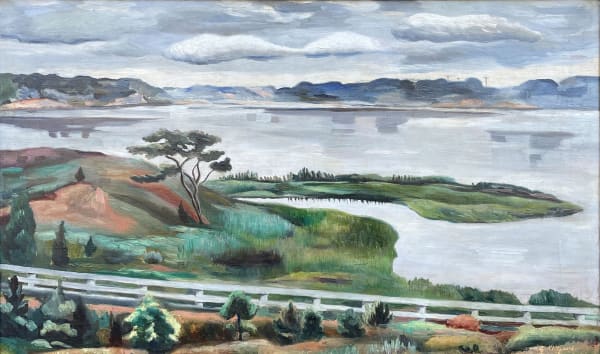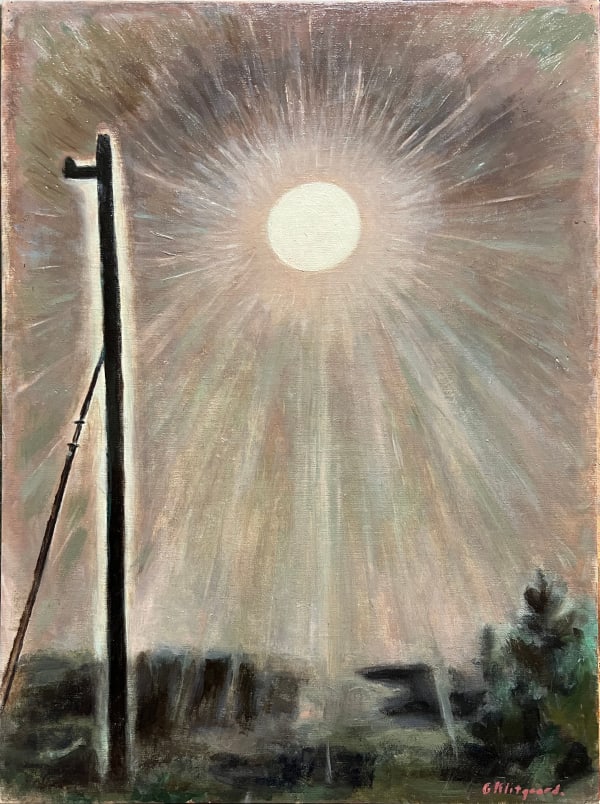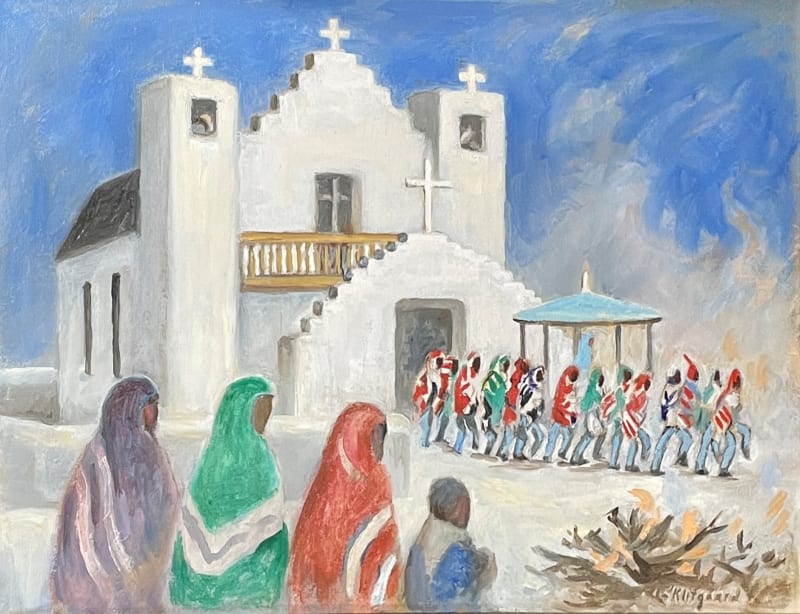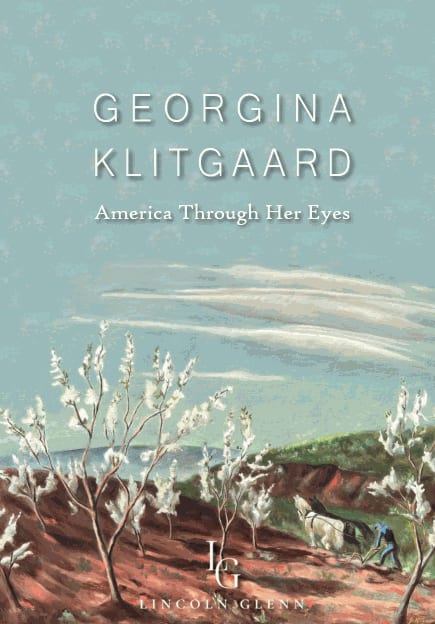Georgina Klitgaard’s art has sometimes gotten lost in the critical propensity to assign artists to membership in one school or another. Unfortunately for her posthumous reputation, Klitgaard defied easy characterization. She was a U.S. modernist, working in both oil and watercolors, but never abandoned figurative painting. She made her reputation in landscape but also excelled in portraits, flower studies, and even cityscapes. Yet despite Klitgaard’s ambiguous status in art history, her paintings continue to fascinate viewers attracted to the unsteady ground between twentieth-century realism and expressionism.
Georgina Klitgaard (née Berrian) was born in Spuyten Duyvil, New York (now part of the Bronx); the Berrians had lived in the area since at least the U.S. Revolution. After graduating from Barnard College, she studied art at the National Academy of Design. In 1919 she married Kay Klitgaard, a Danish artist and writer. The next year, her life took a decisive turn when the couple visited friends in Woodstock, NY—about 120 miles north of New York City--and fell in love with the area.
In 1906, L. Birge Harrison helped found the Art Students League Summer School in Woodstock and the area became a magnet for landscape painters. The Klitgaards bought a house in 1922 on a steep ledge at the end of Cricket Ridge, high above Bearsville, which provided panoramic vistas overlooking the Catskill Mountains and the Hudson Valley. Klitgaard joined the artists’ colony in the area, which at the time included artists Ernest Fiene and Katherine Schmidt.
Klitgaard exhibited widely and her career slowly developed momentum. She was a regular contributor at Whitney Museum shows from 1927 to 1944. In 1929, she exhibited a painting entitled “Carousel” in the Whitney Studio Club’s famous exhibition “Circus in Paint.” Gertrude Vanderbilt Whitney acquired five paintings by Klitgaard in the early 1930s and served as a significant patron for the artist. Klitgaard s New York dealer, Frank Rehn Galleries, exhibited her work from 1930 through the 1950s.
During the Great Depression, the Works Progress Administration commissioned Klitgaard to create murals for three U.S. post offices: Goshen (1937) and Poughkeepsie (1940) in New York, and Pelham, Georgia (1941). Klitgaard’s Goshen mural, “The Running of the Hambletonian Stake,” was controversial for featuring harness racing, a theme still considered of questionable taste for public art even though it was the village’s claim to fame.
Although Klitgaard had a studio 659 Fifth Avenue in New York City, she traveled widely in the United States including New England, Florida, and the Santa Fe area. In 1933, Klitgaard received a Guggenheim Fellowship which provided money for her to tour Europe. Seven years later, the family traveled the United States while Kaj used the trip as background for his book, Through the American Landscape (published in 1941).
However, the bulk of Klitgaard’s work was painted around the Woodstock area. She was best known for wide landscapes of her beloved upstate New York, sometimes drifting into a tonalist preoccupation with seasons, mists, sunrises, and atmosphere. Klitgaard achieved her effects by limiting her palette and attempting to reduce her composition to a few simple forms. This sense of restraint allowed her to retain a sense of place and approach abstraction without jettisoning figurative landscapes. One critic wrote that her Woodstock landscapes looked like “Currier and Ives lithographs…with little clouds and precise arrangements of facts.” Lloyd Goodrich, the noted art historian, praised her “lively sense of movement and a feeling for light and air...with a sort of cool detached lyricism…”
When Klitgaard died in 1976, she seemed out of fashion, detached from almost all postwar art trends. However, in the twenty-first century, she has benefitted from the renewed interest in the prominent female modernists who prospered during the interwar years. Her paintings remain exemplary examples of conservative American modernism.
-

Georgina Klitgaard
Donald Kuspit, Artforum, January 6, 2025 -

Lincoln Glenn Gallery Rediscovers American Art That Time Forgot
Gallerists Douglas Gold and Eli Sterngass tell us how they uncover lost treasures by stellar artists from the past 160 years.Trent Morse, Introspective Magazine, November 10, 2024 -

Through Her Eyes
Lincoln Glenn shines a spotlight on artist Georgina Klitgaard’ s contributions to American modernismAmerican Fine Art Magazine, September 1, 2024
-

Georgina Klitgaard
America Through Her Eyes October 10 - November 23, 2024 Upper East SideRead more -

Jump Right In
Waterways in American Art, 1850-1980 June 23 - August 31, 2023Read more -

The Inaugural Show
A Century in American Art May 3 - September 3, 2022Lincoln Glenn is proud to invite you to its inaugural exhibition at 126 Larchmont Ave. This first exhibition will be a sample of the gallery's inventory, representing over 100 years...Read more












